An expedition to explore the creatures of deep-sea hydrothermal vents in the dark abyss of the Southern Ocean has revealed a “lost world,” straight out of a Jules Verne adventure. Scientists have found new species of crab, snail, sea star, barnacle, sea anemome, and even octopus. These animals thrive in total darkness, warmed by the heat of the vents, and mostly sustained by a food chain that begins with sulphur-oxidizing bacteria that thrive by the mineral-rich waters released from the vents. But scientists have also been surprised by what they did not find: common organisms found at hydrothermal vents in other oceans.

The study, conducted by a team led by Professor Alex Rogers of Oxford University, utilized a Remotely Operated Vehicle (ROV) to document marine creatures living around two hydrothermal vent locations at a tectonically active region called the East Scotia Ridge, not far from the Antarctic peninsula. Their findings were published in the January 2012 issue of the journal PLoS Biology.

Volcanically active regions of the ocean floor, such as tectonic plate boundaries, and ‘hotspots’ that spawn undersea volcanic mountains, are caused by the intrusion of magma from the Earth’s mantle into the crust. Resulting fissures in the ocean floor form hydrothermal vents that spew very hot mineral-rich water into the sea. Some vents, called black smokers, appear as chimneys billowing smoke. These are very hot vents releasing water rich in sulfides. The ‘chimneys’ are made of mineral precipitates, created when hot mineral-rich vent water meets frigid sea water. Another type of hydrothermal vent – not as hot as black smokers – is formed where hot water diffuses from cracks in the sea bed.
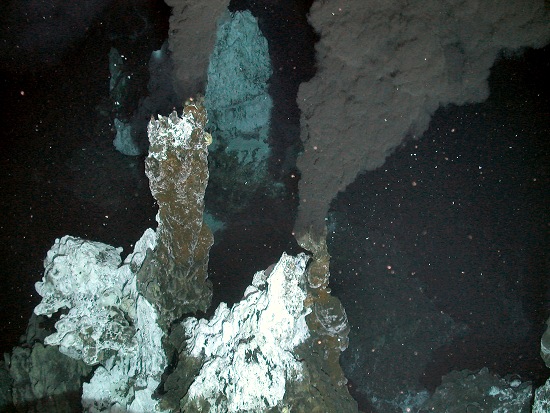
Hydrothermal vents occur at great ocean depths where sunlight never penetrates, yet, despite total darkness and extreme heat, life flourishes around active vents.
In a press release announcing their recently-published findings, Professor Rogers said:
Hydrothermal vents are home to animals found nowhere else on the planet that get their energy not from the Sun but from breaking down chemicals, such as hydrogen sulphide. The first survey of these particular vents, in the Southern Ocean near Antarctica, has revealed a hot, dark, ‘lost world’ in which whole communities of previously unknown marine organisms thrive.
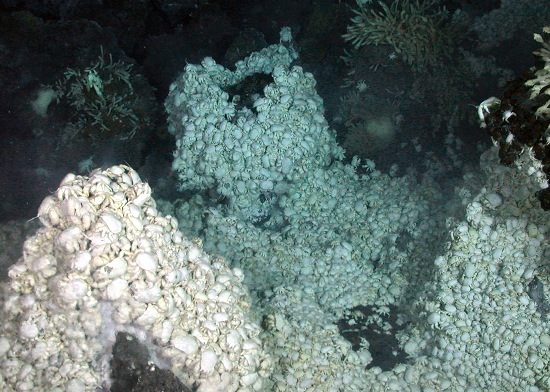

The most conspicuous member of the vent fauna was a new species of a type of crustacean called ‘yeti crab.’ These crabs, thought to feed on sulphur-oxidizing bacteria, were found carpeting large areas around the vents. Seven-legged predatory sea stars, also a new species, were seen feeding on stalked barnacles and yeti crabs. The vent fauna also included new species of snail, limpet, barnacle, and sea anemone. Several octopus of an unknown species appeared like ghostly apparitions in some images taken by the ROV. Fish, however, were very rarely seen.

There was another important and unexpected result. Said Rogers, in the press release,
What we didn’t find is almost as surprising as what we did. Many animals such as tubeworms, vent mussels, vent crabs, and vent shrimps, found in hydrothermal vents in the Pacific, Atlantic, and Indian Oceans, simply weren’t there.
This absence may be caused by currents of the Southern Ocean acting as a barrier to prevent hydrothermal vent organisms in other oceans from reaching the Antarctic vents. In fact, past research indicates that ocean vents across the world have their own biogeographic provinces, created by geological and ocean circulation barriers that prevent some types of organisms from colonizing other vents. The unique fauna of these newly-explored Southern Ocean vents are, themselves, a new biogeographic province.

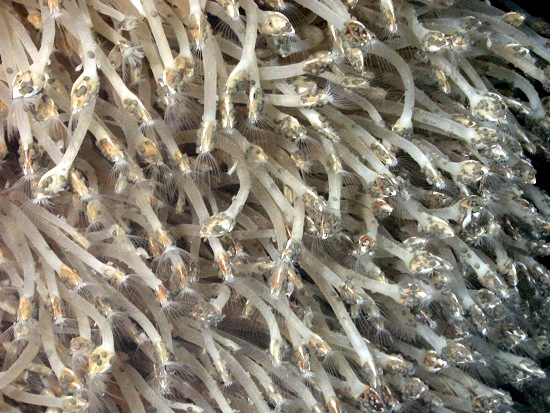
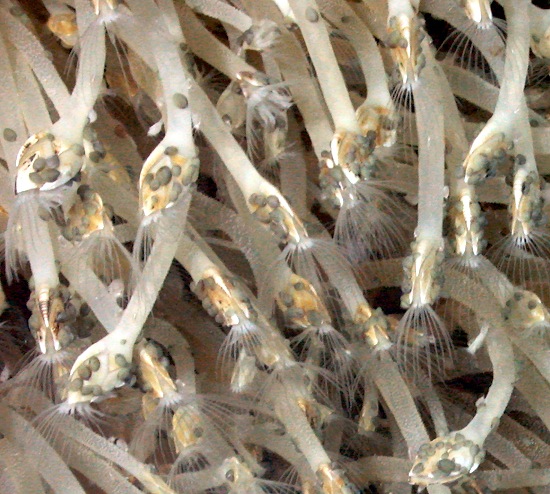
In April 2011, a panel of marine scientists that included Professor Rogers met to assess the state of our oceans. In their preliminary report, the scientists warned of a great risk we were facing, entering a phase of species extinctions in the oceans that’s unprecedented in human history. Said Professor Rogers:
These findings are yet more evidence of the precious diversity to be found throughout the world’s oceans. Everywhere we look, whether it is in the sunlit coral reefs of tropical waters or these Antarctic vents shrouded in eternal darkness, we find unique ecosystems that we need to understand and protect.
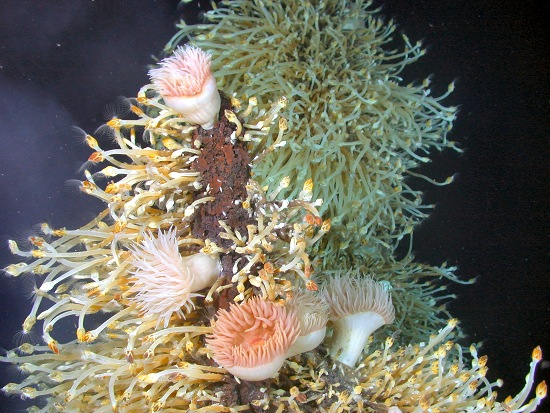
Bottom line: Exploration by remotely operated vehicles of deep-sea hydrothermal vents near the Antarctica peninsula has revealed a “lost world” of new species including crab, snail, sea star, barnacle, sea anemome, and octopus. Professor Alex Rogers of Oxford University led the team, which published its finding in the January 2012 issue of the journal PLoS Biology. The scientists said they were also surprised by the absence of common organisms found at hydrothermal vents in other oceans.
California Academy of Sciences describes 140 new species in 2011











